How vaccine shopping left AstraZeneca on the shelf
Many in the crowd of hundreds outside the Sydney vaccination hub were audibly dismayed. While there were plenty of doses, they were shocked to learn they could not opt for their brand of choice. How did it come to this?
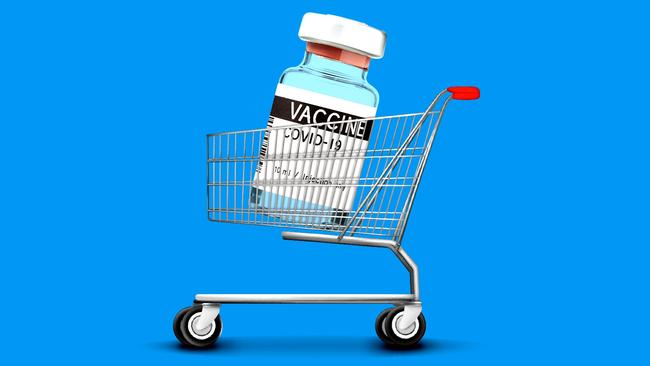
In his decades immersed in immunisation and pandemic planning, Professor Terry Nolan has witnessed the evolution of some exceptional medical and scientific milestones, from the rise of HIV to the spread of swine flu and the development of meningococcal vaccines. But lately he has noticed the emergence of another phenomenon, one that has become more pronounced through the Covid pandemic’s progression. Suddenly, it seems, we’re all experts. “Last year everyone was an epidemiologist. This year they’re vaccinologists,” jokes Nolan, who heads the Doherty Institute’s Vaccine and Immunisation Research Group.
Over the past 20 months, Australians have been inculcated with the virus, its evolution and its possible solutions. We’ve set our clocks by daily news briefings and endured the anxious wait for the start of a leader’s snap press conference, fearful of what more could happen. We’ve Googled medical studies and debated their implications. And since vaccines were released, we’ve had some strident ideas on them, too.
“We should just turn up and get what we want,” the infuriated mother of a young adult declared on a recent drizzly weekend in locked-down Sydney, summarising the sentiments of many Covid-savvy observers. Mirza, who declined to have her surname published, was desperate for her 20-year-old daughter to be vaccinated because she works in a supermarket 30 hours a week. When she heard that the NSW Government had opened a mass vaccination hub for food industry workers, she and her daughter Natalie travelled almost 20km from their home in the city’s north-west to join a crowd of hundreds, many of whom were soon audibly dismayed. While there were plenty of doses available, they were shocked to learn that they could not opt for their brand of choice.
“A lot of people drove all the way here for Pfizer… and then we turned up here and they’re leading us all to AstraZeneca,” said Mirza, whose daughter was among several hundred to leave without being jabbed. “I wanted her to get Pfizer because that’s what she was advised to get by her doctor,” she explained later. “And when we got there it was very disappointing.”
Vaccination has become key to the nation’s future joy and prosperity: the Federal Government is relying on 14.4 million adult Australians to be fully immunised before Covid-related restrictions on millions of curtailed lives start to ease. It’s Australia’s biggest call to arms, and yet somewhere on the path to liberty it has resembled a lopsided popularity contest.
For those invested in bringing life-saving vaccines to Australia, there was always the possibility of some level of adversity emerging. But not like this. As former federal health adviser Nick Coatsworth says of the public’s new and growing appetite for vaccine shopping, and its predilection for one product over another: “We didn’t anticipate that there was going to be brand trashing.”
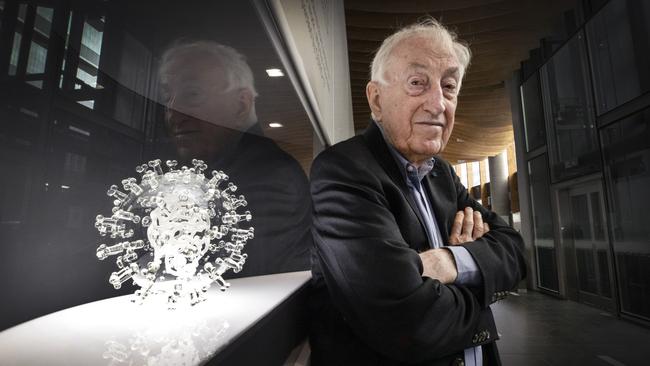
Before it became the workhorse of the nation’s Covid vaccination program, AstraZeneca was an important if relatively modest brand name. In almost 65 years in Australia, the UK-based pharmaceutical company has produced a range of drugs for cancer, kidney and cardiovascular disease. As the organisation’s Australian president Liz Chatwin says of its hitherto low profile: “We never would have imagined that AstraZeneca would be a household name.”
That began to change in April last year, when the company announced plans with researchers at Oxford University, who had been toiling since February, to develop and distribute its first vaccine. Half a year later, trials revealed a product that was highly effective at fighting Covid-19. The news was widely celebrated. But AstraZeneca’s reported success rate of 79 per cent at preventing symptoms of the virus, which had emerged from the third phase of trials, was widely questioned when it was revealed that the figure had been derived from the average of two different trials, whose participants had not received identical doses. (The company later conceded that this was an interim statistic and that the final figure was actually 76 per cent.)
In February this year, just weeks after Pfizer’s Comirnaty, AstraZeneca became the second Covid-19 vaccine to receive regulatory approval in Australia. “It’s an excellent vaccine,” says laureate professor Peter Doherty, who won the 1996 Nobel Prize for Medicine for discovering how immune cells destroy deadly viruses. He had his first jab in late March. “It will protect you over 90 per cent against being hospitalised. As an 80-year-old what that means for me is my risk level is now down to that of a 50-year-old because I have had two shots.”
Although it is the world’s most widely used Covid vaccine, with more than 1 billion doses issued in 170 countries, it was not the Federal Government’s first choice. But when the University of Queensland’s vaccine was shelved, the focus shifted to its fallback option. AstraZeneca’s vaccine might not be perfect – Pfizer, for example, has a higher efficacy rate at preventing any symptoms – but it has many advantages. Sold at cost, it is easy to administer and, compared with alternatives that have to be kept at very cold temperatures, it is easy to transport and store. It offers comparable protection against hospitalisation and death, and – crucially for Australians – it is manufactured in Melbourne, ensuring a reliable local supply. “The benefits far outweigh the risk,” says Professor Kristine Macartney, director of the National Centre for Immunisation Research and Surveillance.
Yet even as the Therapeutic Goods Administration approved its local use in February for Australians 18 and older, dissent was growing, largely online, about the virus and vaccines in general. “The scientific community has been dealing for more than a decade with social media taking off in a big way,” Doherty says of the rise of anti-vaccination proponents and rivers of misinformation covering every falsehood from supposed fertility issues to unreported deaths and conspiracy theories centred on Bill Gates. “In the US I just read that people in Appalachia thought that doctors and nurses were making money out of Covid. There’s so much nuttiness out there.”
It was not just outsiders lacking substantive medical or scientific backgrounds, however, who began to concern authorities. Coatsworth, the nation’s deputy chief medical officer for the first frenetic months of the pandemic, would later tell the Royal Australasian College of Surgeons: “There is a hard-core rump of activist doctors who have been anti-AstraZeneca since the start of this year, misquoting and misrepresenting the phase 3 trial data and, in my view, substantially undermining the national program.”
As Covid’s first anniversary loomed, Coatsworth was deeply concerned that, even before the first Australians had been jabbed, there was increasingly vocal opposition coming from those who, although medically qualified, were not vaccine epidemiologists. “They were already saying that it’s a less effective vaccine, which is wrong,” he says now. “I was astounded.”
Although the Federal Government was aware of these dissenting voices, “I think the health department didn’t recognise the potential damage that this could cause… It’s fair to say that we were very worried about the impression of constraining academic freedom,” says Coatsworth, now an infectious disease specialist at Canberra Health Services. Yet he became so concerned about the potentially significant medical consequences of the vaccine being talked down that he contacted the heads of several academic institutions over summer. “[I was] saying, ‘Guys, you’ve got to stop your academics trashing AstraZeneca. It’s our way out of this’.” And the response? “It was, ‘We’ll try to. But they have the right to say what they want.’”

The Australian Technical Advisory Group on Immunisation (ATAGI) is an important if unassuming body. Before the pandemic, its profile tended to be so low that until recently Peter Doherty, one of the nation’s most highly decorated medical researchers, had never heard of it. Its members, who come from a range of medical, scientific and consumer backgrounds, meet several times a year to advise the federal health minister about immunisation issues. Crucially, they make recommendations, not policy.
After AstraZeneca’s approval in Australia, reports started to emerge from Europe about a rare blood clotting issue, sometimes fatal and possibly linked to the vaccine. By late March, a month after the first Australians had been vaccinated, the World Health Organisation and regulatory agencies including the European Medicines Agency were reviewing data from tens of millions of people who had been vaccinated globally.
In the meantime, with only two products approved and one of them, Pfizer, destined to be in short supply for months, both the Prime Minister and health department secretary Brendan Murphy had been assuring the public, to the consternation of many, that there was no race to administer vaccines. “That sent a strong message to the community that they could wait and that there was no drama and that everyone would be fine and we would get there,” says the Doherty Institute’s Terry Nolan. “A number of people including me were saying, ‘Hang on, there’s a thing called winter coming. You’re living in fairyland if you think these zero cases are going to continue.’”
ATAGI continued to stress the importance of vaccinations but it was not until April 2, when close to one million Australians had received a vaccine, that it issued a notably different advisory. A likely blood clotting case had occurred in Australia and while some countries, including Canada, had recommended limiting AstraZeneca’s use in some age groups, ATAGI would be meeting again within days “to assess the risks and benefits of this vaccine for the Australian population”. That ATAGI might change recommendations was not in itself unusual. Now, though, mid-pandemic, every piece of its advice was being widely scrutinised. “The medical authorities absolutely had to put out the data re risk,” says Doherty. “Any hint of concealment in this is fatal to the public health campaign. They had to make a clear statement and put it out there.”
For doctors and scientists used to working with risk, the possibility of blood clots was concerning, but to a point. As Doherty says: “We all understand that in the majority of accidents wearing a seat belt you are likely to come out of it better than not. But we also understand that sometimes wearing a seat belt can also carry risk. It can trap you in the car, for example.” But that sort of acceptance of the inevitability of risk was not translating well to the general public.
That became most evident at the end of the first week of April, when ATAGI met again, this time over two days. Its members concluded their protracted gathering on April 8. Minutes later, as many Australians sat down to watch the nightly news, there was a news flash. Scott Morrison had just called a press conference.
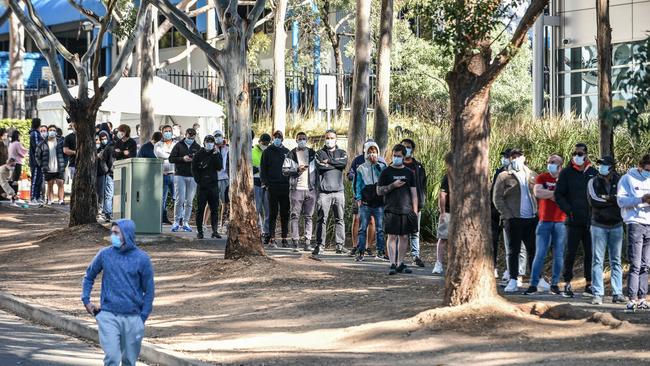
For a nation already primed for gloom, the announcement seemed urgent and ominous. News bulletins switched live to Parliament House where the optics only added to the sense of gravity. The Prime Minister stood before a phalanx of cameras and microphones, flanked by those who had become household identities through the pandemic’s key moments: Health Department secretary Brendan Murphy, chief medical officer Paul Kelly and Health Minister Greg Hunt.
“Throughout this journey we have always sought to keep Australians as informed as we possibly can,” Morrison began. “I can recall standing in this room a year ago taking you all through the many different issues as a result of the matters being worked through by our medical experts…” It was a long preamble and it added to the tacit sense among observers that this was a deeply important moment. “Tonight we have received advice from ATAGI – in the last 15 minutes – and we thought it was important that we came and briefed you on that this evening,” Morrison continued. Finally, he came to the big reveal: because of the risk of rare blood clots, ATAGI had advised that the Pfizer vaccine was now preferred over the AstraZeneca vaccine for Australians aged under 50. This was not, however, a prohibition, but “an expression of a preference”, and Australians should make their own choices in consultation with their GP.
“Just to reiterate – this is a very rare event,” Kelly said of the blood clotting. “At the moment, it seems to be around four to six per million doses of vaccine. It’s only been found in the first dose of the AstraZeneca vaccine, usually within four to 10 days after that vaccine. But it is serious, and it can cause up to a 25 per cent death rate when it occurs.”
In the absence of any community transmission of the virus, Murphy stressed this was “a highly precautionary position that Australia can take because we are in a fortunate position with Covid”. All vaccines carry risks, he noted. “I want to reiterate we are strongly encouraging those 50 and over to take up the AstraZeneca vaccine – it is a highly effective vaccine at preventing severe Covid. The risk is extraordinarily low… It is a vaccine that is very, very effective.”
The night’s message was meant to be heavy on prudence. Yet there seemed to be an issue with its packaging as soon as the questions began. One journalist asked: Why would anyone now risk giving their elderly relatives AstraZeneca, especially when there was no community transmission in the country? Another inquired: Was there a risk that people could now be scared off that vaccine?
Morrison seemed perplexed. “We’ve been very up front with you,” he explained. “It is an issue of, I’d say, low, low risk in terms of its incidence… But it would not be the right thing to do to not share that information with Australians.” The point of the announcement, he stressed, was to reassure Australians. But the opposite was happening. Thirty-five per cent of Australians were now unwilling or unsure about being vaccinated, according to data released soon after by the Melbourne Institute’s Vaccine Hesitancy Tracker – its highest recorded rate of vaccine hesitancy.
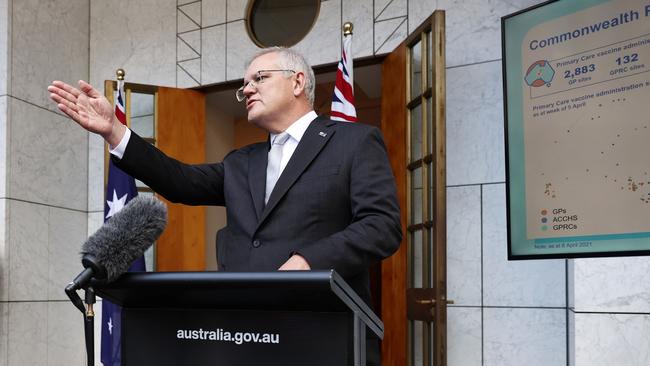
The Prime Minister might have thought his message was clear, but to many it generated confusion. The nation had spent a year having governments determine if and when they could leave not just their country but sometimes their homes. How could they now be expected to decide on the personal suitability of a vital vaccine, even with their doctor’s help? “There is nothing wrong and everything good about people having a deep understanding of what it is that’s under discussion,” says Terry Nolan, a former chair of ATAGI. “But there is everything wrong with creating a situation where the onus of decision making and the filtering of those facts is so heavily placed in the lap of the consumer that they don’t know what to do.”
Over the following weeks, there was a steady trickle of cases of thrombosis with thrombocytopenia syndrome (TTS) in Australia likely linked to AstraZeneca. By June 16, 60 were confirmed or probable, two of them fatal. While the numbers remained small, the risk of getting blood clots for those in their 50s was higher than initially thought (up from 1.9 to 2.7 per 100,000 doses). The following day, ATAGI again revised its advice. Because of the small risk of blood clots, and ongoing uncertainty about supplies of other vaccines, it was now recommending that Pfizer, the only other vaccine available in the country, be the preferred option for all adults aged under 60. And it added an important rider: “ATAGI emphasises that this advice is specific to the context that there is currently no or limited community transmission in most of Australia and would be different in other countries.”
Or, as Kristine Macartney, senior editor of the Australian Vaccination Handbook, says of our tendency to underestimate long-term risk: “When you don’t have Covid on your doorstep, it’s hard to appreciate the trade-off.”
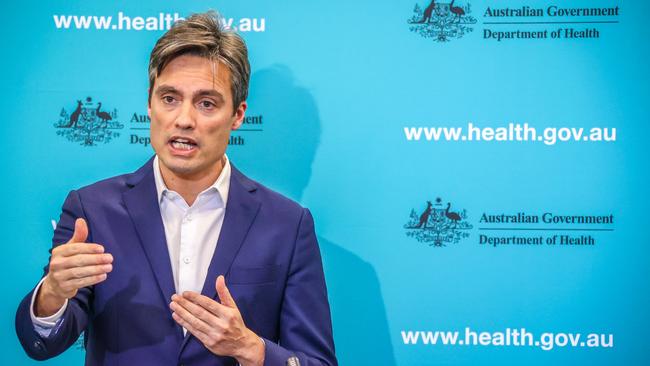
From his home in Canberra, Nick Coatsworth watched on with increasing concern. With Pfizer doses not yet due to arrive en masse for several months, and no other vaccines yet approved, he was worried about the battering of the nation’s most widely available option. “Firstly, the community was primed to think that Pfizer was a more effective vaccine [through] this sort of academic media discourse. And then you had this side-effect come in. It was a two-punch at AstraZeneca. When in fact both were not really justified.” (Pfizer has also been linked to a rare risk of inflammation of the heart, or of the membrane around the heart, particularly in young men.)
Coatsworth was also worried about the way ATAGI’s messages were being read. The group had talked in terms of “preferred” and “recommended”. Somehow, this was being interpreted in the wider community as meaning another product “ought to be avoided”. Through his own work he was witnessing a growing aversion to the AstraZeneca vaccine. Older people had started procrastinating about being jabbed, hoping they could wait for an alternative. “I had doctors coming up to me who had had the AstraZeneca saying, ‘We will not get the second AstraZeneca, we will get the Pfizer.’ Doctors!” Then ATAGI recommended that only people over 60 receive AstraZeneca. “That,” he says, “just killed it.”
That ATAGI advisory arrived at a significant moment. The day before, Sydney’s long period without community transmission had ended when a limousine driver from the eastern suburbs was found to have contracted the highly contagious Delta strain of the virus. By the end of the month, dozens of people had been infected and Greater Sydney had begun a prolonged lockdown that continues today.
Until Delta’s thunderous arrival, there had been little sense of urgency for Australians to be vaccinated. With almost no community transmission and a scarcity of AstraZeneca alternatives, “given the level of enthusiasm there is now [for jabs], think about how much enthusiasm there was two months ago,” says Nolan. “There was silence.” But there were plentiful supplies of AstraZeneca, and it remained the most viable option for Australians to be protected against the rapidly spreading virus, as the Prime Minister attested in late June, when he suddenly made clear that anyone under 40 could approach their GP about receiving it.
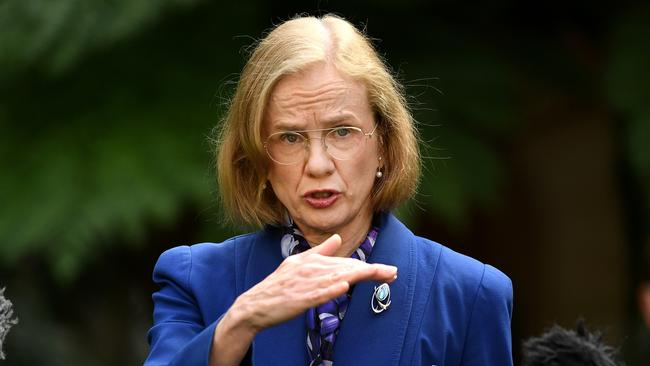
But his pronouncement was quickly and vehemently rejected by Queensland’s chief medical officer Jeannette Young. “I do not want under 40s to get AstraZeneca. Because they are at increased risk of getting that rare clotting syndrome… I don’t want an 18-year-old in Queensland dying from a clotting illness who, if they got Covid, probably wouldn’t die. We’ve had very few deaths due to Covid-19 in Australia in people under the age of 50 and wouldn’t it be terrible that our first 18-year-old in Queensland who dies, related to this pandemic, died because of the vaccine?” She added: “We’re not in a position that I need to ask young, fit healthy people to put their health on the line getting a vaccine that could potentially, significantly harm them.”
Could a life-saving vaccine be maligned much more? “I think people had already made up their minds by then; I’m not sure Jeannette’s comments were that contributory,” says Coatsworth. “But they were very symptomatic of the problem… That was the attitude in some quarters: if we could keep it out until Pfizer comes in, we don’t want to put anyone at risk. And it’s just not how medicine works. There is no zero-risk scenario in medicine.”
Covid was stealthily encroaching on Australia’s biggest city but not enough to deter an increasingly AstraZeneca-averse population. At Sydney’s Olympic Park vaccination hub one day in July, 8295 hard-to-get Pfizer vaccinations were issued while just 50 people lined up for AstraZeneca. By then the outbreak had crossed borders and lockdowns had been imposed over millions of people in multiple states. On July 24, ATAGI recommended that, because of the increasing risk of contracting Covid and the ongoing constraints of Pfizer supplies, everyone aged 18 and above in Sydney should seriously consider getting vaccinated with any available option, including AstraZeneca. It was a strong endorsement, but still the nation’s key vaccine was dogged by hesitancy with two million doses sitting in GPs’ fridges. “There has been this sort of almost irrational snobbery against AstraZeneca,” Australian Medical Association vice-president Chris Moy told the ABC. “It feels like the captain on a plane has said ‘the plane is going to crash into the sea’ and people are worried about which brand of life vest they are going to put on.”
As Covid settled in for its second winter, the brand’s reputation even seeped into popular culture. A new online game, Glady Bird, encouraged players to collect vaccines and avoid the virus, with one point for AstraZeneca and five for Pfizer.
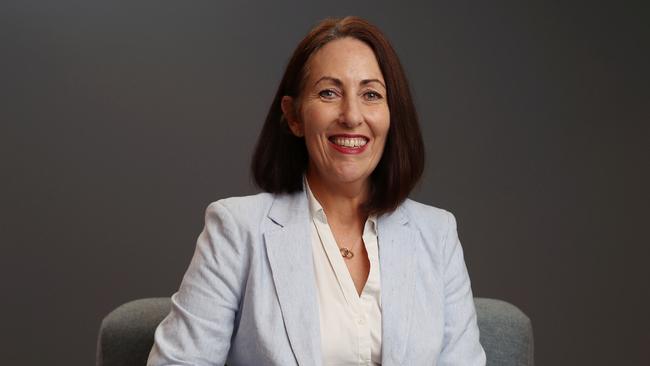
The risk of a fatal blood clot caused by AstraZenecais very low – around one in a million. But it is significant. “Most vaccines carry no risk of severe conditions that are likely to cause death,” concedes the NCRIS’s Kristine Macartney. “We knew from the clinical controls that we would never see a serious effect commonly… But then to have one that was a new syndrome, an unusual syndrome… that’s genuinely challenging.” Of the 8.1 million AstraZeneca doses issued nationally by mid-August, there were 112 reported cases of TTS following the AZ vaccine, 62 of them confirmed, and 50 probable. Seven people have died.
With the Moderna vaccine and greater Pfizer supplies due to hit Australia imminently, the Federal Government expects to be considerably less reliant on AstraZeneca by the end of the year. Still, with 50 million doses set to be made in Australia, the odds are that there will be more clots, although they can usually be treated successfully.
In terms of preventing deaths and hospitalisations, AstraZeneca’s offering has been deemed as successful as any other. Yet the impact of so much adverse publicity has had innumerable consequences, not least for the company’s staff of 60,000, 1000 of whom are based in Australia. “They’ve got a huge feeling of pride, but sometimes… our employees felt like they didn’t want to tell people they worked for AstraZeneca because they were afraid of the things that might be said to them,” says AstraZeneca’s Liz Chatwin. For those workers, she says, the past year has been “definitely a rollercoaster, dynamic, but a year full of pride and it’s probably the most significant year I have ever had in my career as a pharmaceutical leader. We have been disappointed sometimes, we have been frustrated, and sometimes hamstrung in terms of what we can say.” A range of regulations prohibit staff from talking directly to consumers or saying anything that might be construed as promoting their product. But while Chatwin is constrained in her ability to discuss some aspects of her company’s first vaccine, many others are frank about its importance and its prolonged thrashing.
“Everybody knew that the vaccine program was the way out,” says Coatsworth. “But suddenly [there was] this idea that somehow our procurement was problematic because we had only invested in 10 million Pfizer and people were now saying that AstraZeneca was a dud.” He believes the hesitant uptake of the most widely available vaccine, although improving in recent weeks, will undoubtedly lead to a delayed return to pre-Covid lives. “We will never get back everybody who could have had the AstraZeneca vaccine but we are going to get back a proportion, and that will probably be in the tens of thousands.”
That imperative has indeed become a race. By the end of August, millions of residents were in lockdown and about 140 people had died in NSW alone, more than half of them during this most recent Delta outbreak. After a sluggish start, just over half of Australians over 16 have now had their first vaccination.
“We want consumers to make their own choice,” says the NCIRS’s Macartney. “But the fact AstraZeneca has taken such a hit is unfortunate and certainly doesn’t deserve that. It’s been a really difficult time. And I think the perception that I should choose a vaccine, one over the other, and make my own informed choice, is an unfortunate element of where Australia has come to.”
Vaccine shopping may be new to Australia, and it may even be here to stay. Meanwhile, the pandemic continues. “The point that needs to be driven home,” says Macartney, “is that Covid is not shopping around in who it infects. Covid is a threat to all of us.”


To join the conversation, please log in. Don't have an account? Register
Join the conversation, you are commenting as Logout